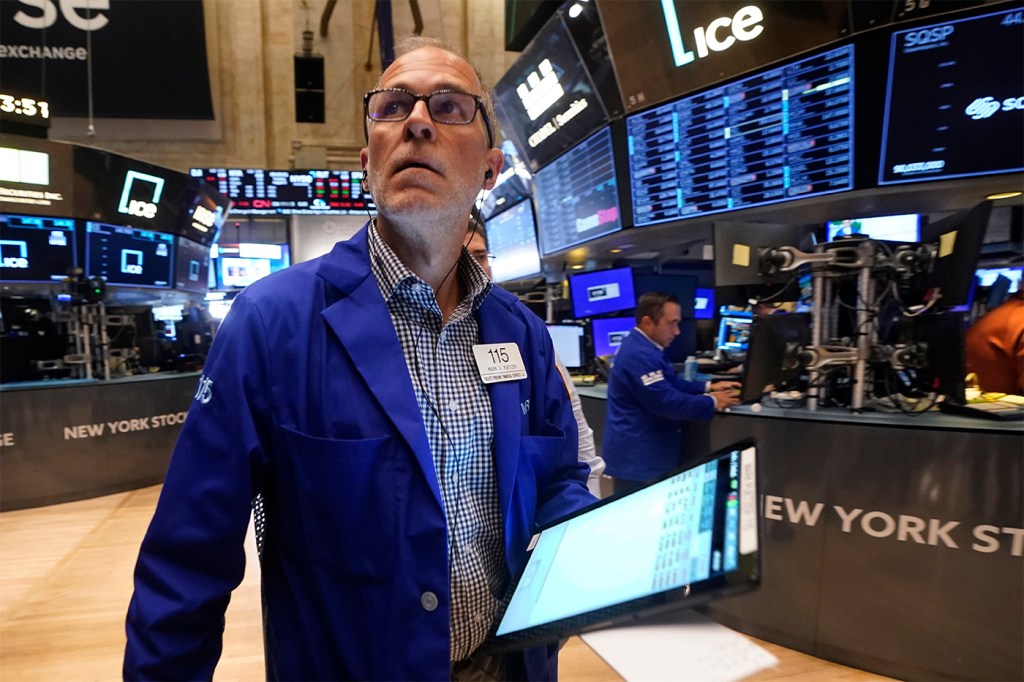Weak jobs report sends stocks tumbling, but what’s really happening in the labor market?
“I feel like the market took the Friday jobs report as an opportunity to self correct about a couple different things,” Northeastern University labor economist Alicia Modestino says.

The recent jobs report showed a softer-than-expected labor market. Global markets subsequently tanked — with echoes of Black Monday.
But was the jobs report really that bad?
“I feel like the market took the Friday jobs report as an opportunity to self correct about a couple different things,” Northeastern University labor economist Alicia Modestino says. “So I think that’s why we’re seeing this have a little bit more legs than just a one-time correction to the labor market, because they’re baking in a few other things.”
The Bureau of Labor Statistics reported Friday that the U.S. economy added 114,000 jobs last month and the unemployment rate rose to 4.3% — its highest level since October 2021. Economists had expected that 175,000 new jobs would be created, according to FactSet, and the unemployment rate was forecast to remain at 4.1%.
U.S. stocks subsequently skidded, with the S&P 500 falling 1.8% and the tech-heavy Nasdaq dropping 2.4% that afternoon.
Japan’s Nikkei 225 index had its biggest one-day loss since Black Monday in 1987, dropping more than 12%.
U.S. stocks resumed their fall later Monday, with the Dow Jones closing down 1,034 points, or 2.6%; and the Nasdaq and S&P 500 both losing more than 3%.
On Tuesday morning, the three major U.S. stock indexes showed small gains.

Report not ‘that huge of a miss’
Modestino, an associate professor with appointments in the School of Public Policy and Urban Affairs and the Department of Economics at Northeastern University, says the Friday jobs report was a “miss.” But she doesn’t think it was “that huge of a miss.”
“We know we’re slowing down and we know we’re coming down,” Modestino says, noting that June’s numbers got revised down by 27,000 jobs. “But I think it’s very hard to predict things on the way down and on the way up, because we’re just looking at last month’s data and we’re not sure where we are in the trend.”
Plus, Modestino notes, it’s not like July was a quiet month — in addition to a hurricane, “think about what happened politically over the month of July,” Modestino notes.
Featured Posts
“Employers definitely get there’s a lot of uncertainty,” she says.
Some bright spots in the report
Moreover, the jobs report did have some bright spots, Modestino notes — labor force participation and average hourly earnings increased, and there was growth in health care (+55,000 jobs), construction (+25,000 jobs), and transportation and warehousing (+14,000 jobs).
“We know health care is probably going to keep going with the aging of the baby boomer generation,” Modestino says. “But construction — that’s people building stuff. That’s great that there’s job growth there. Transportation and warehousing — that’s people moving stuff around because we all bought more stuff. That’s another great place for the economy to still be growing.”
As for the markets’ sell-off in response, Modestino sees several symptoms.
Likely AI bubble and carry trades
First is a likely bubble in the tech market around artificial intelligence. Indeed, she notes that information jobs were down by 20,000.
“That’s where a lot of the stocks went down,” Modestino says, citing Nvidia, Apple and Tesla. “Investors want to get out of the AI positions because they’re worried about that.”
Modestino also cites concern over carry trades — when an investor borrows in the currency of a place where interest rates are low, like Japan or China, and uses it to invest in a currency where interest rates are higher, like Mexico or the United States.
“If you think the Fed’s going to be cutting (interest rates) in September, which looks super likely now given the jobs report, you wanna get out of that,” Modestino says.
In fact, interest rates for 30- and 15-year mortgages also plunged on Monday, and the Federal Reserve is likely to cut interest rates in September.
The Fed interest rate is currently 5.25% to 5.50%. Two years ago, in July 2022, the rate was 2.25% to 2.50%. Prior to the COVID-19 pandemic, the rate was 1.50% to 1.75% in January 2020.
Which gets to the third reason why investors may have been willing to sell.
“Maybe we think that the labor market is softening and we want to send a clear message to the Fed that: you didn’t cut rates in July, you better cut them in September,” Modestino says.
“You don’t wanna miss the boat by inches here, because it looks like the boat’s leaving, in terms of sailing to the potential soft landing,” Modestino says. “You want to step onto that boat before it leaves the dock.”











